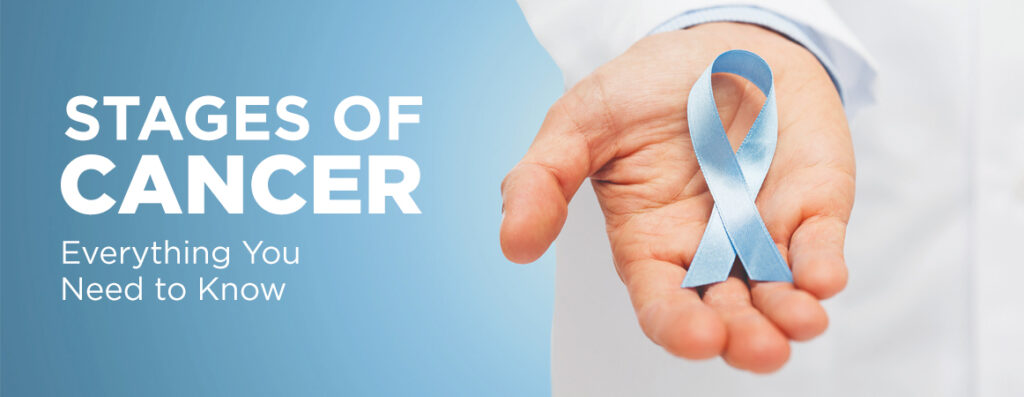Stages of Cancer: Everything You Need to Know
What Are the Stages of Cancer?
Cancer staging is a system used by healthcare professionals to describe the extent and spread of cancer within the body. The stages of cancer help determine the most appropriate treatment approach and predict the patient’s prognosis. But how many stages of cancer are there?
Stages of Cancer:
Generally, cancer is staged from stage 0 to stage IV, with each stage indicating the progression of the disease.
Stage 0: Cancer in Situ
At stage 0, cancer is localized to the site of origin and has not invaded neighboring tissues or spread to other parts of the body. This stage is often referred to as “in situ,” meaning the cancer cells are confined to their original location. Early detection and treatment at this stage offer the best chance of cure and long-term survival.
Stages I and II: Localized Cancer
In stages I and II, cancer has begun to grow and may have spread to nearby tissues or lymph nodes but remains confined to the primary site. Symptoms of cancer at these stages may vary depending on the type and location of the tumor. Early-stage cancer symptoms may include unexplained weight loss, persistent fatigue, and changes in bowel or bladder habits.
Stage III: Regional Spread
At stage III, cancer has progressed to nearby lymph nodes or tissues, indicating regional spread. Treatment at this stage often involves a combination of surgery, chemotherapy, and radiation therapy to target the primary tumor and any affected lymph nodes. Cancer causes at this stage may include genetic predisposition, environmental factors, and lifestyle choices such as smoking or excessive sun exposure.
Stage IV: Advanced Cancer
Stage IV cancer is the most advanced stage, indicating that cancer has spread to distant organs or tissues in the body. This stage is also known as metastatic or advanced cancer and may present with more severe symptoms such as persistent pain, difficulty breathing, or neurological changes. Treatment for stage IV cancer focuses on managing symptoms, improving quality of life, and prolonging survival through targeted therapies or palliative care.
How Stages of Cancer Determined?
Cancer staging typically involves a combination of imaging tests, such as CT scans, MRIs, and PET scans, along with biopsy results to assess the extent of tumor growth and spread. The TNM system, which stands for tumor, node, and metastasis, is commonly used to stage cancer based on the size of the tumor, involvement of nearby lymph nodes, and presence of distant metastases.
The Importance of Early Detection
Early detection of cancer plays a crucial role in improving cancer outcomes and increasing treatment options. Regular screenings and self-examinations can help detect cancer in its earliest stages when it is most treatable. Common cancer symptoms to watch for include persistent cough, changes in moles or skin lesions, and unexplained lumps or swelling.
Treatment Options for Different Stages of Cancer
Cancer treatment varies depending on the type, stage, and location of the tumor, as well as the patient’s overall health and preferences. In general, treatment may include surgery to remove the tumor, chemotherapy to kill cancer cells, radiation therapy to target cancerous tissues, and targeted therapy to block specific pathways involved in cancer growth and spread.
Regardless of the cancer stage, supportive care is essential to help patients manage cancer symptoms, cope with treatment side effects, and improve their quality of life. This may include pain management, nutritional support, counseling, and access to complementary therapies such as acupuncture or massage.
Causes of Cancer
A complex mix of lifestyle, environmental, and hereditary variables leads to cancer. Common cancer causes include genetic mutations, exposure to carcinogens such as tobacco smoke and UV radiation, viral infections like HPV and hepatitis, unhealthy diet and lack of physical activity, and certain hormonal and reproductive factors. Early detection and prevention are key.
Symptoms of Cancer
Cancer symptoms vary widely depending on the type and location of the tumor but may include unexplained weight loss, persistent fatigue, changes in bowel or bladder habits, persistent cough, abnormal bleeding, lumps or swelling, difficulty swallowing, and changes in moles or skin lesions. Early detection and timely medical evaluation are crucial.
Conclusion
Understanding the stages of cancer is essential for navigating the diagnosis and treatment process effectively. From early detection and localized disease to advanced metastatic cancer, each stage requires a tailored approach to care. By staying informed, seeking regular screenings, and adopting healthy lifestyle habits, you can take proactive steps to reduce your risk of cancer and improve your overall well-being.
Post Disclaimer
The information contained in this post is for general information purposes only. The information is provided by "Stages of Cancer: Everything You Need to Know "and while we endeavour to keep the information up to date.
Legal Disclaimer
We do not claim to cure any disease which is considered’ incurable ‘ on the basis of scientific facts by modern medicine .The website’s content is not a substitute for direct, personal, professional medical care and diagnosis. None of the medicines mentioned in the posts ,including services mentioned at "medicineguide.us" should be used without clearance from your physician or health care provider.
Testimonials Disclaimer– : Results may vary, and testimonials are not claimed to represent typical results. The testimonials are real, and these patients have been treated with homeopathy treatment from our clinic . However, these results are meant as a showcase of what the best, Medicine can do with their disease contions and should not be taken as average or typical results.

